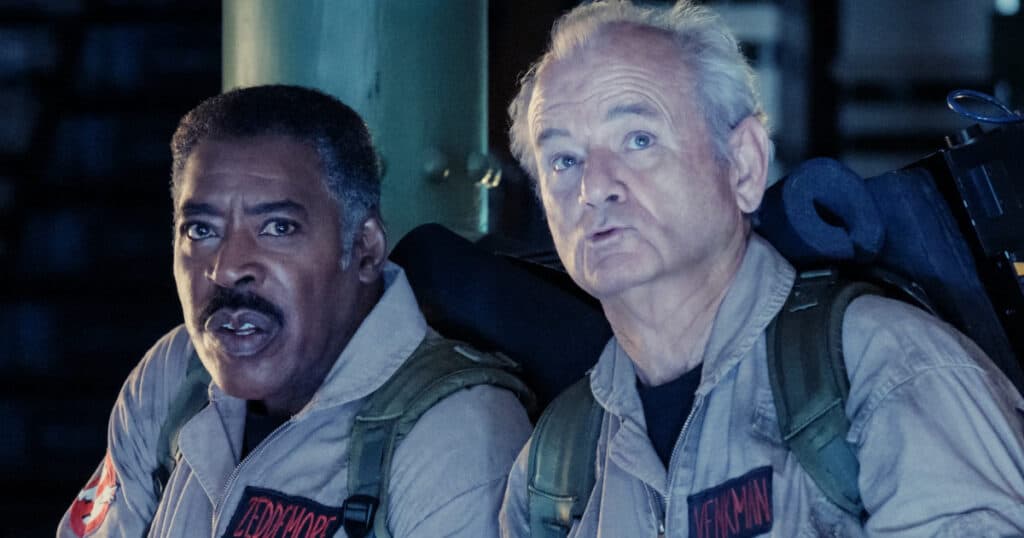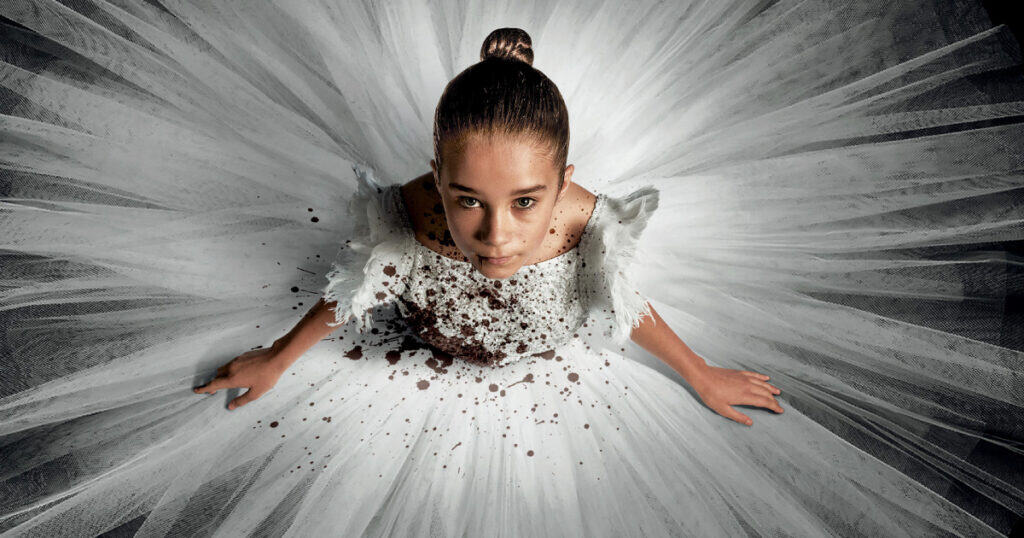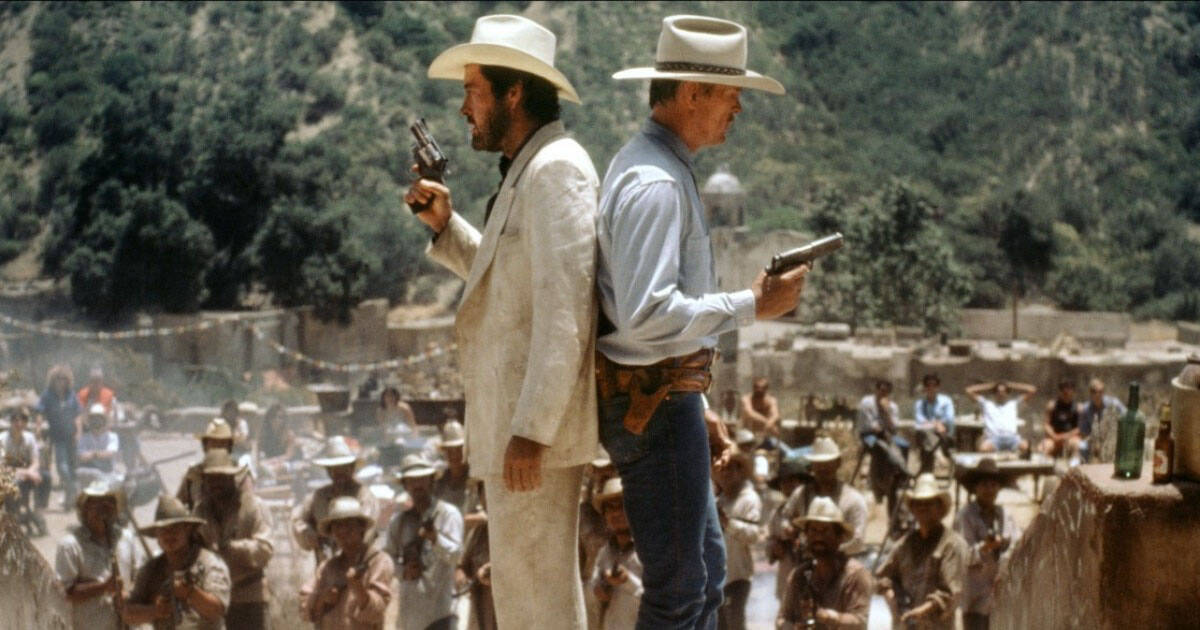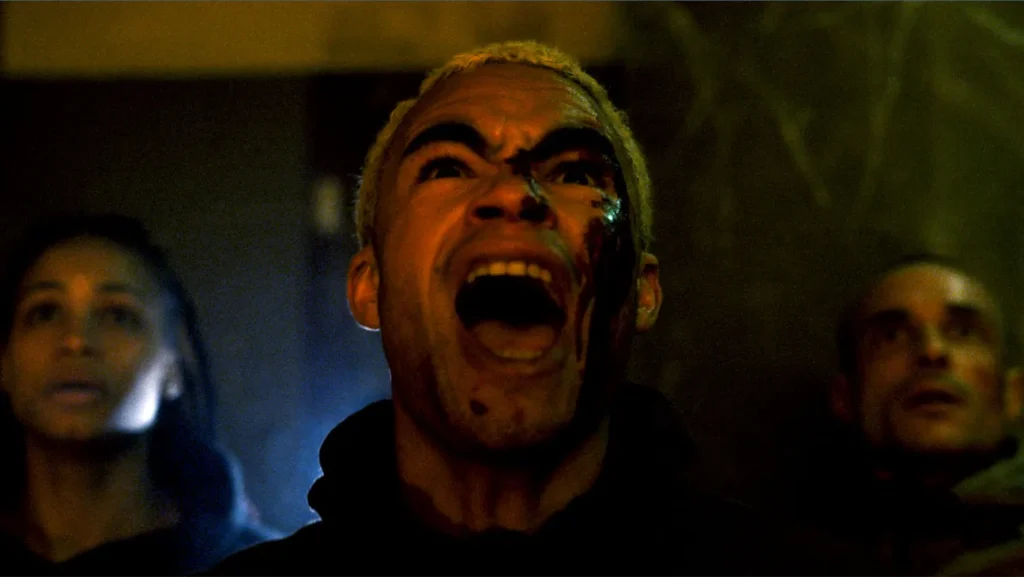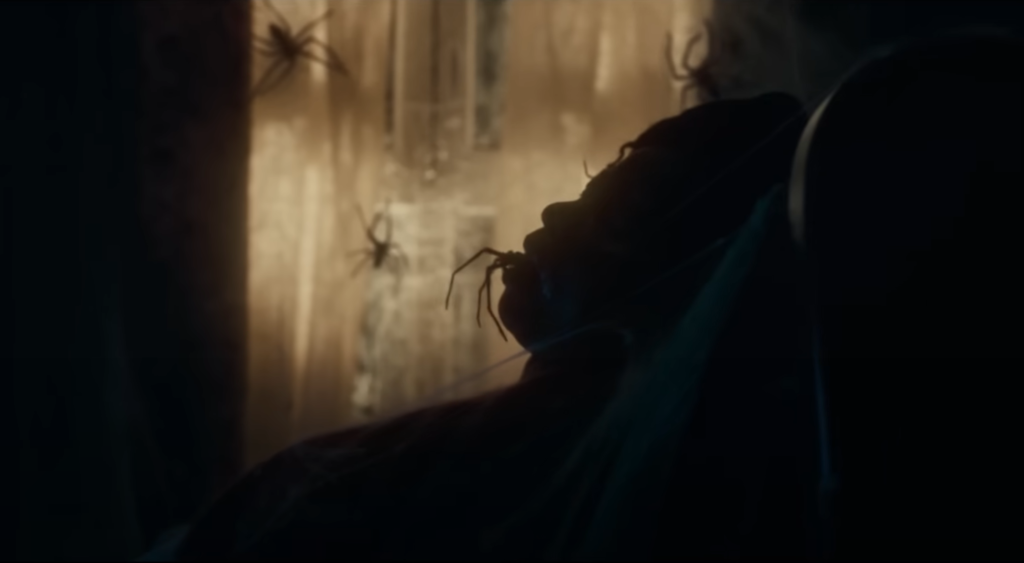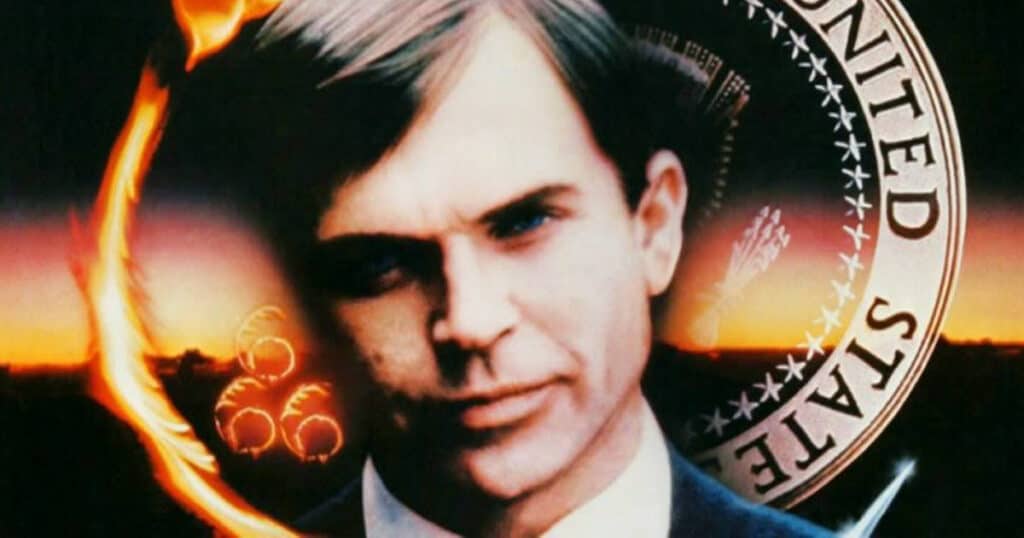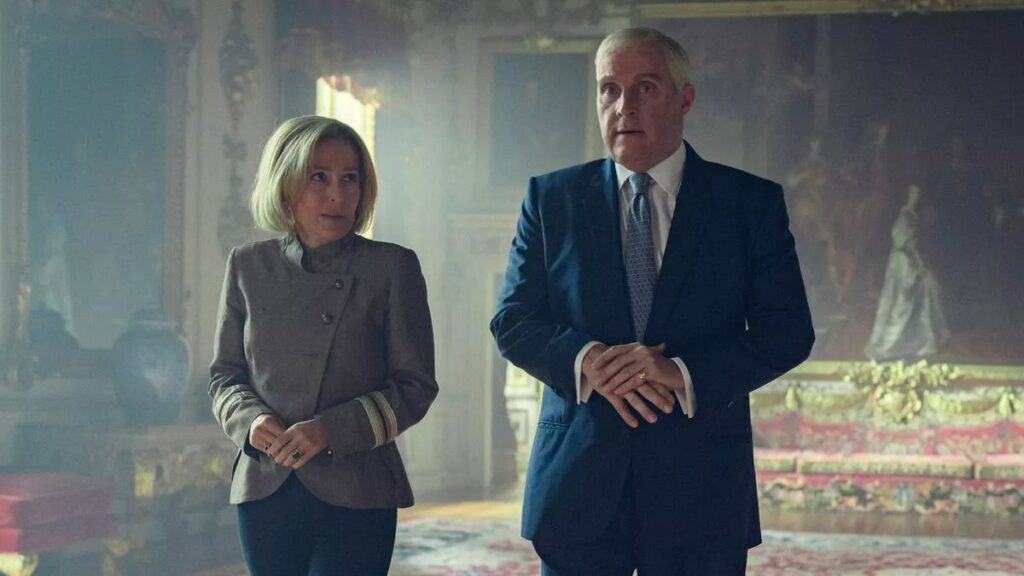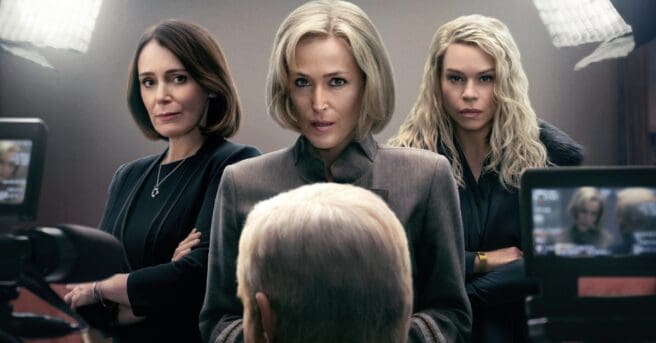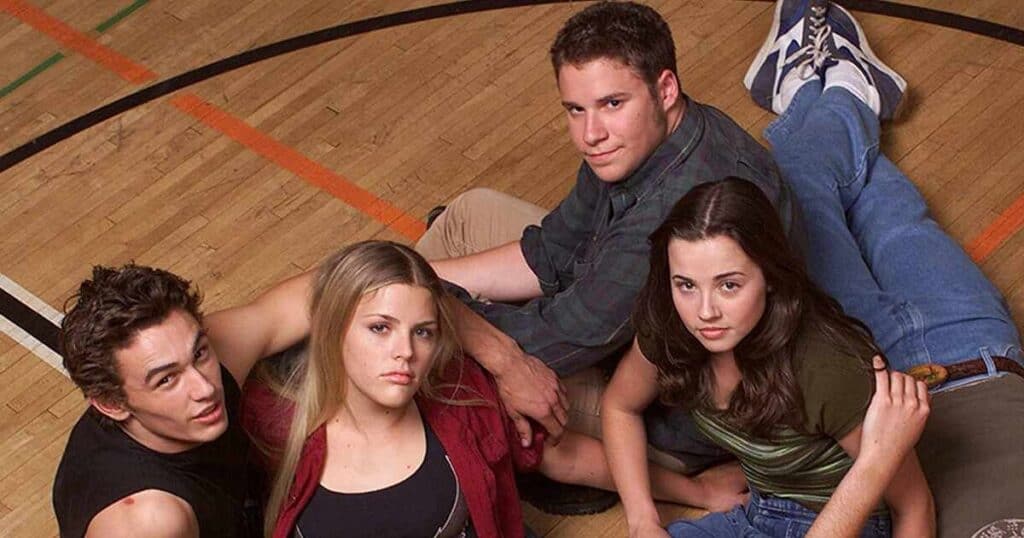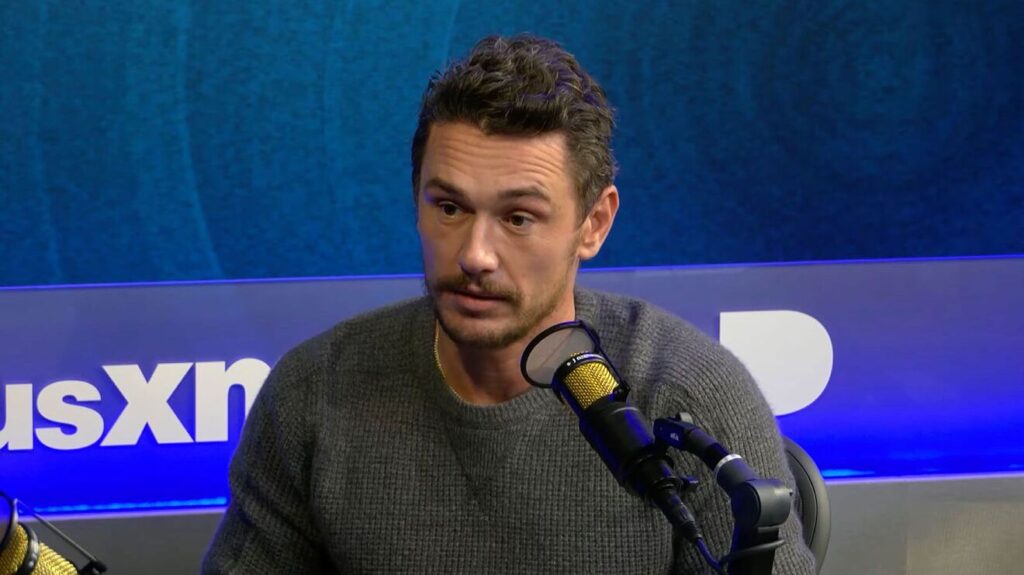
For many around the world, there’s one name at the top of the action totem pole: Jackie Chan, and today marks his 70th birthday.
If you only know him as a goofy martial arts comedian from the Rush Hour and Shanghai Noon series, then consider this a wake up call. Because when Jackie did things HIS way on his home turf, he churned out some of the best action movies you’ll ever see.
Many would point to Drunken Master II as Jackie’s magnum opus. Fair enough, that is an all-timer, but for an example of his best modern day martial arts action, mixed in with some crime drama and his signature comedy, one of his absolute best outings is 1985’s Police Story.
In the 1970s, Jackie Chan soared to fame internationally once he was finally able to break out of the shadow of Bruce Lee. When Chan had started getting starring roles at the beginning of his career, martial arts cinema was in the middle of a Bruceploitation phase, where imitators were used and promoted to be Bruce Lee in a shameless copycat manner. Unfortunately, for Jackie, he was forced into the same kind of roles. Even casting him in a sequel to Lee’s Fist of Fury, titled New Fist of Fury, where played the brother to Lee’s character. It was an obvious misstep. When Jackie was finally able to do his own style, mixing in his biggest influences like Charlie Chaplin and Buster Keaton, he took the world by storm and, well, the rest is history.

When Police Story came around, it would not be his first non-period martial arts film, but it would be the first one that felt contemporary in 1985 Hong Kong cinema. Jackie would play a character named Chan Ka-Kui in the original Chinese version, but in international versions, he’s named Kevin Chan. Casual fans might know this character from Supercop released in the 90s by Dimension Films, but this movie is where it all originated since Supercop is actually Police Story III: Supercop.
Chan is a Hong Kong cop who is part of an elite task force that is assigned to fight organized crime. Right off the bat, as the opening credits end, we’re thrust right into the case. All the Police Story films, interestingly, start right in the midst of the plot and seemingly end just as abruptly without traditional character exposition or conclusion. The big sting operation introduces us to the key characters. The boss, Chu has many business ventures but is bleeding money, so he’s turned to drug dealing and always has his nephew Danny handling the dirty work. He also has a newly appointed secretary, Selina Fong, played by Brigitte Lin (famous in Hong Kong cinema circles for The Bride With White Hair and Swordsman 2).
The undercover sting is immaculately planned and many officers have a detailed role in a shanty town village where a big deal is about to go down. It all goes to sh*t and the police find themselves in a gun fight in the middle of the village. Chan takes the initiative to go after the fleeing suspects. And what follows is one of the most iconic chases ever put to celluloid. What first transpires is a car chase through the shanty town village. And when I say “through,” I mean STRAIGHT THROUGH. Each car cuts through buildings demolishing everything down the hill. Chan eventually loses his car and chases the bus down on foot as he steals a citizen’s umbrella. The second iconic part of this sequence is when Chan catches up and hooks himself onto the bus. He hangs on for dear life as he tries to avoid cars and ward of attackers. Chan gets kicked away and the third iconic part happens when he takes a short cut around a hill, cuts the bus off down the road and plays chicken with the driver. It all culminates in one of the most dangerous stunts as the bus stops just before Chan and hurls the criminals out of the front windows. Mind you – THIS WAS ALL DONE FOR REAL!
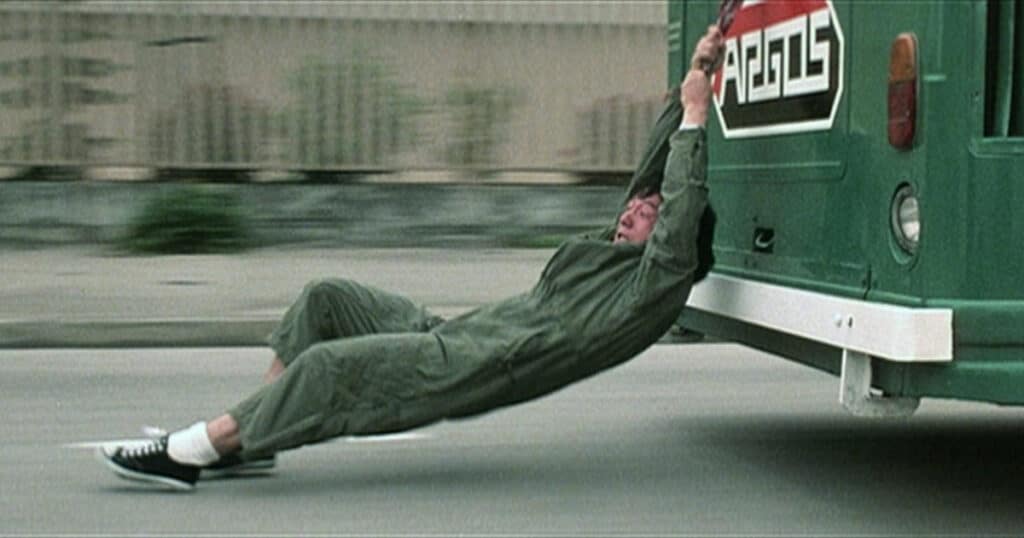
As Chan finally apprehends Chu and his cohorts, his superiors decide to release his secretary Selina in an attempt to get a solid case out of her. They assign Chan to protect her from any attempts on her life from Chu to keep her silent. However, Selina keeps refusing Chan’s security at every turn. In a hilarious sequence of classic Jackie humor, Chan has one of his fellow officers pose as a killer trying to off Selina while he fakes an attempt to rescue her. It more or less goes smoothly, but it works as Selina now sticks by Chan’s side seeking his protection. And not a moment too soon, when they get ambushed for real as Chu sends a gang of goons to kill both Chan and Selina.
As Selina goes into protective custody with Chan, we’re introduced into another staple of the franchise where Chan’s work always conflicts with his relationship with his girlfriend, May, played by Maggie Cheung, who American audiences also got to see in Jet Li’s Hero when it was released in the states (and of course, she’s still one of Wong Kar Wai’s favorite actresses). Poor May always seems to catch Chan in the most inopportune times as she sees him with Selina still sporting her sexy negligee. Chan gets a birthday cake to the face and in a bit of gratuitous posturing, Chan shows off his bare ass when getting cleaned up. Although, if you’re an action star in the 80s, it’s just in your contract to show off your finely tuned butt.
Chu eventually gets released and with all the trouble the police had put him through, he puts Hong Kong’s supercop through the ringer and destroy his name and reputation by framing him for murder. The last act of the movie has Jackie playing things rather seriously. He’s not making any jokes and his character is out for justice with a side of vengeance.
This sets up one of the greatest finales of Chan’s entire career. Selina goes on the run with a briefcase full of evidence of Chu’s dealings. When she seeks refuge at a mall, Chu, his nephew Danny, and his many henchmen chase her down. Chan catches up and fights with all of them in one of the most brutal finales in action movie history. So much glass is broken with all the fighting, Jackie said the crew started calling the movie, “Glass Story” during filming. And the whole scene gets capped off with one of Jackie’s most dangerous stunts where slides down a four-story pole lit up with decorative lights and falls into a children’s playhouse. This scene alone is what made me a fan of his. It’s pure, unadulterated fighting at its best. It’s also a best example of how Jackie stands apart from other action heroes who fight multiple enemies at once. In most movies, and especially martial arts films, the attackers usually come at the hero one at a time while the others seem to wait, here Chan gets attacked from every direction at once and can barely keep up fending off every attacker. That is, until he activates beast mode.
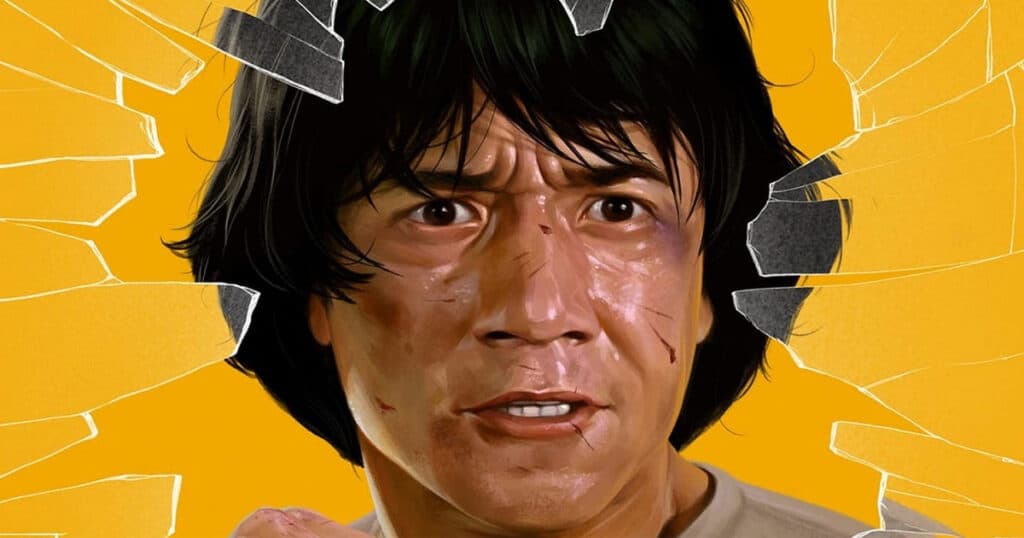
Police Story was spawned when Jackie made his second attempt at breaking through to the American market. His first attempt was the 1980 film, Battle Creek Brawl which co-starred Mako as his uncle. Jackie clashed with the director of that film, Robert Clouse, director of Enter the Dragon and Reel Action classic, China O’Brien. He hated how they specifically brought him over to the states based on his Hong Kong film work, but never let him control his action sequences. The same would happen with his second attempt, the 1985 film, The Protector, which co-starred Danny Aiello. In The Protector, Jackie has said they tried to make him more like Clint Eastwood and gave him tough guy lines as a gruff New York cop. This falls into the lower echelon of 80s action movies. He was again not in control of his action scenes and felt like the way the American action was shot left no room for his creativity and were rather dull. Before Jackie even premiered The Protector in Hong Kong, he actually reshot the fights to his own satisfaction and filmed an entire subplot not present in the American version.
The only thing Jackie gives The Protector credit for is giving him the inspiration for Police Story. Whereas Jackie had played cops before, Police Story was the best of both worlds. There would be a gritty crime story that involved political red tape of the Hong Kong police force along with a more grounded villain, mixed with some of the humorous situations that Jackie likes to weave into his movies. There’s even a bit in Chu’s trial where his lawyer uses the specific details of the opening chase scene as an argument for the defense. It’s an extremely nice touch that is rare in action movies where the action design is actually used as relevant information for the story to take a new turn.
Not only did Police Story change the face of Hong Kong action cinema, but its influence is evident in Hollywood films. In 1989’s Tango & Cash, Stallone gives a shoutout to Jackie with a sequence in the beginning that’s nearly a shot-for-shot recreation of the bus chase ending, complete with the criminals getting launched through the wind shield. Then, in 1992’s Rapid Fire, Brandon Lee was a professed fan of Jackie’s and used a stunt where he rams a guy with a motorcycle right through multiple panes of glass as well as incorporating a clothes rack into a fight scene. Then, in 2003, Michael Bay used the entire shanty town hill sequence in Bad Boys II.
Jackie would follow up Police Story with 1988’s Police Story 2. It’s a worthy follow up that ultimately doesn’t surpass the first, but it has some stellar action as well. Half of the movie is a continuation with Chu’s business partner torturing Chan’s personal life, then the second half introduces new villains with a trio of mad bombers. Then, 1992 saw Chan team up with Michelle Yeoh for Police Story 3: Supercop. Chan goes undercover with Yeoh to bring down a drug and weapons dealer. This film would veer more towards Rambo-like gunplay and explosions than Chan’s usual fighting, but the stunts are outrageous as ever as Jackie hangs from a helicopter and Michelle Yeoh matches the insanity with her own stunts. In the last entry of the first era of Police Story movies, we get Police Story 4: First Strike. Chan is working as a spy in sort of a James Bond-type adventure. This installment is pretty far removed from the rest and might as well have been its own movie – which New Line released it as – titled Jackie Chan’s First Strike in 1996.
Jackie would eventually come back to the brand name two more times with a standalone reboot called New Police Story (a sequel to this movie was announced this week). In this, Jackie got rid of the comedy entirely and wanted to show off his dramatic skills as he played a tortured cop who got his team killed by X-Game, rich kid criminals lead by Daniel Wu of Into the Badlands. Chan would do another reboot with Police Story: 2013. It would again be a more dramatic film for Jackie, and unfortunately the film gets severely bogged down by epileptic editing with nauseating shaky cam. The less said, the better.
As it is, Jackie Chan’s Police Story stands as one of the all-time greatest action flicks, and if you happen to have a Criterion Channel subscription, you can watch the three first Police Story movies right now. Check them out. They’re so much fun.
Do you want us to dig into more Jackie Chan movies? Let us know in the comments! In the meantime, check out a video we did on Dragons Forever right here!
The post Police Story: Celebrating Jackie Chan’s 70th birthday with his best movie appeared first on JoBlo.

